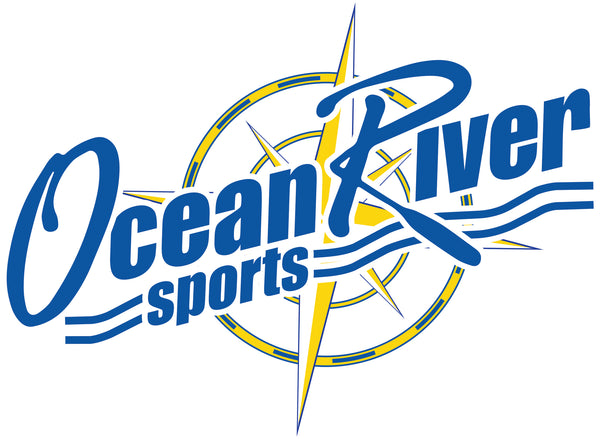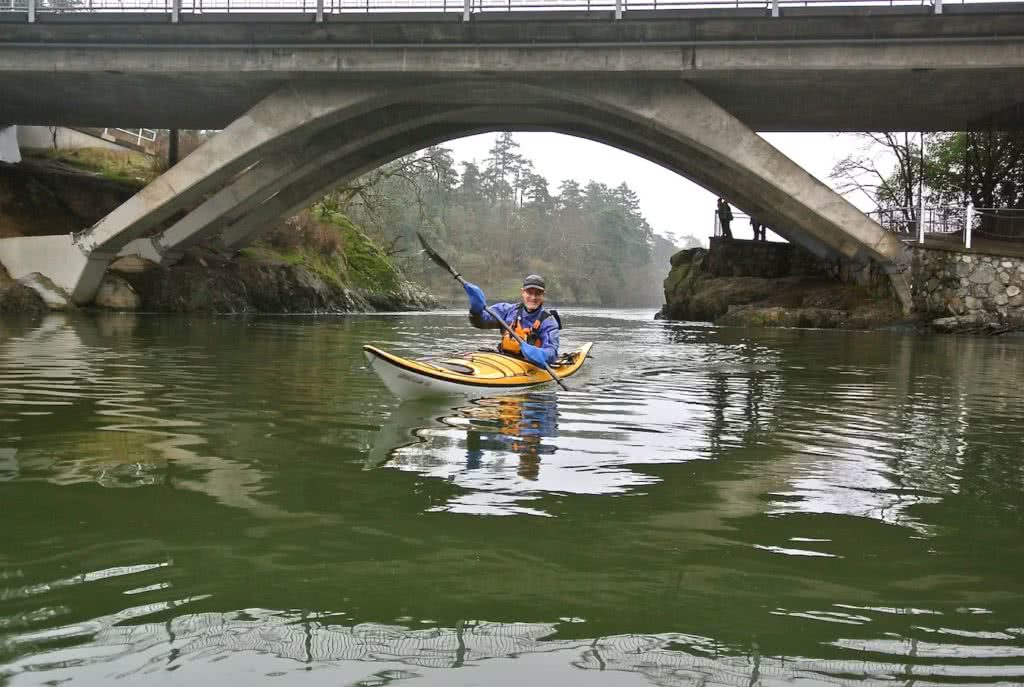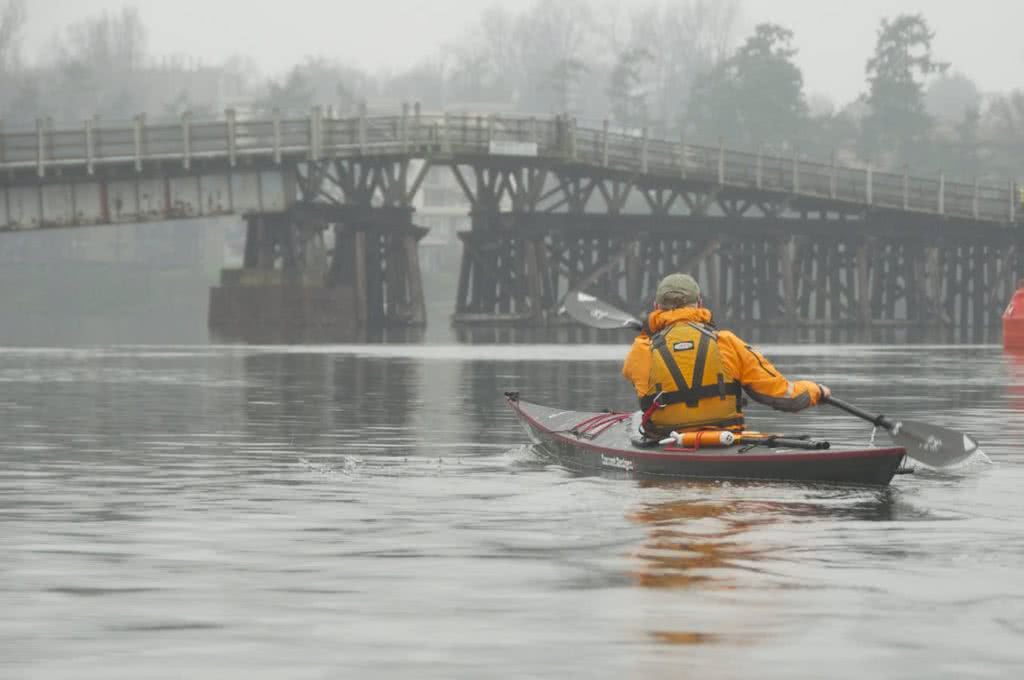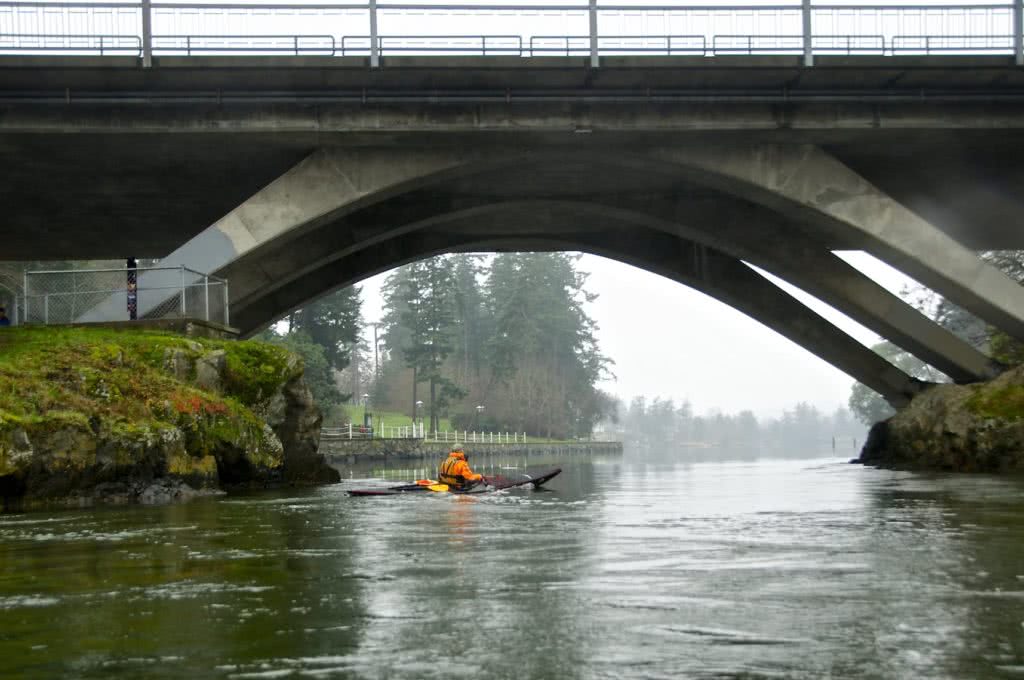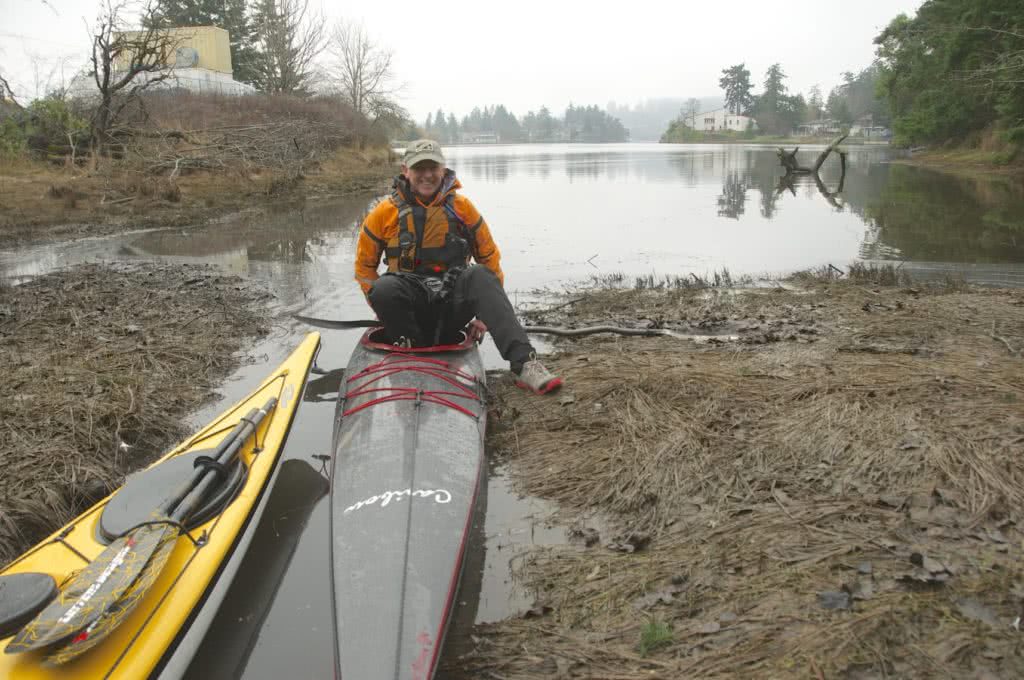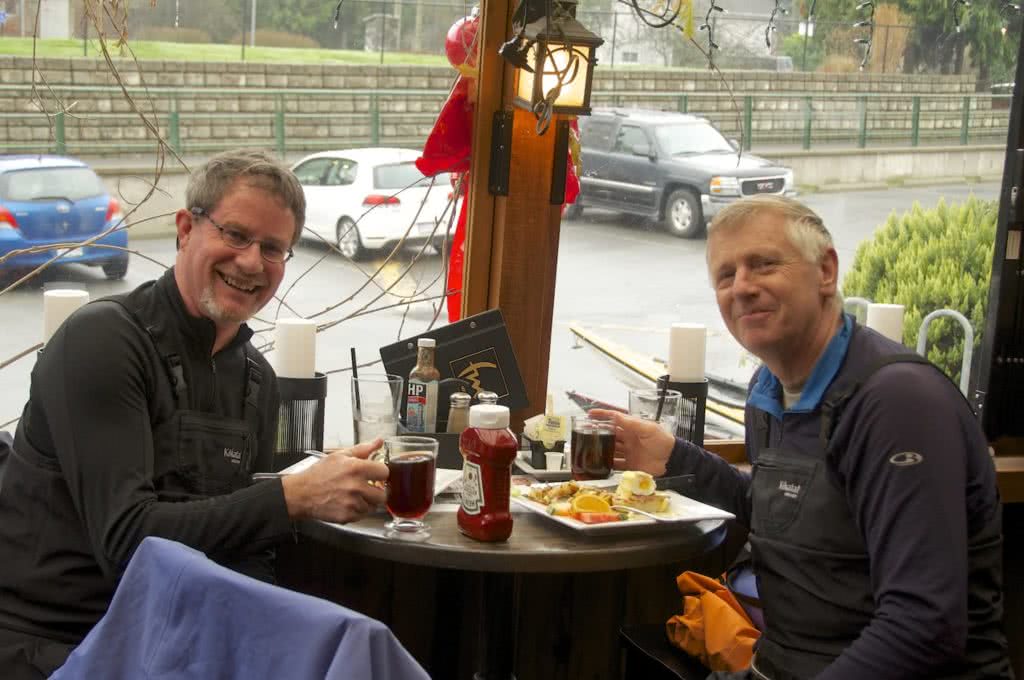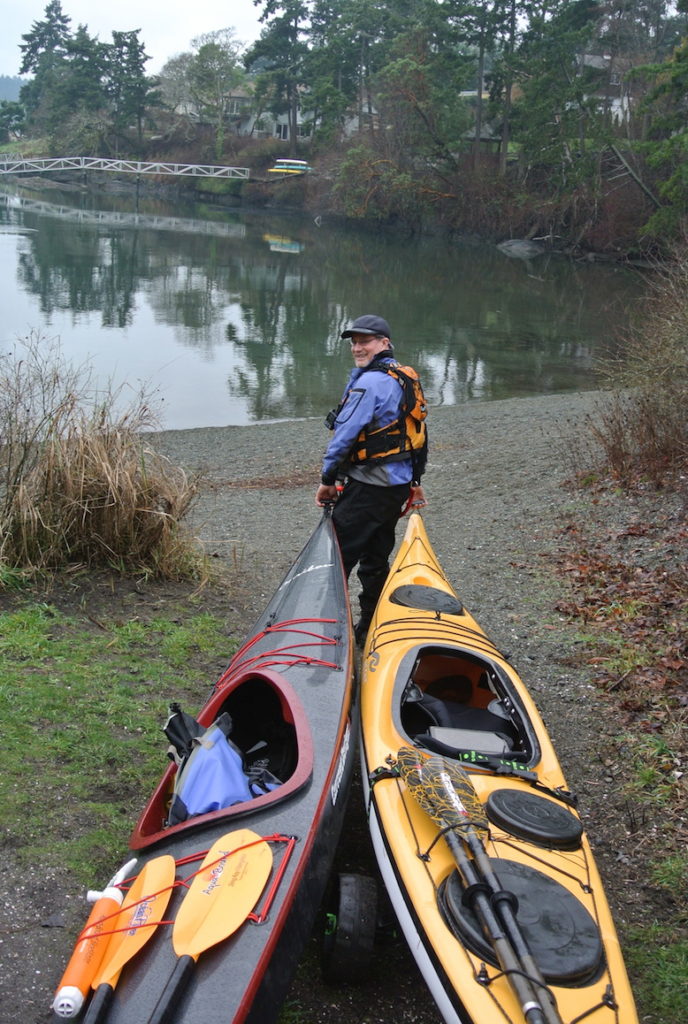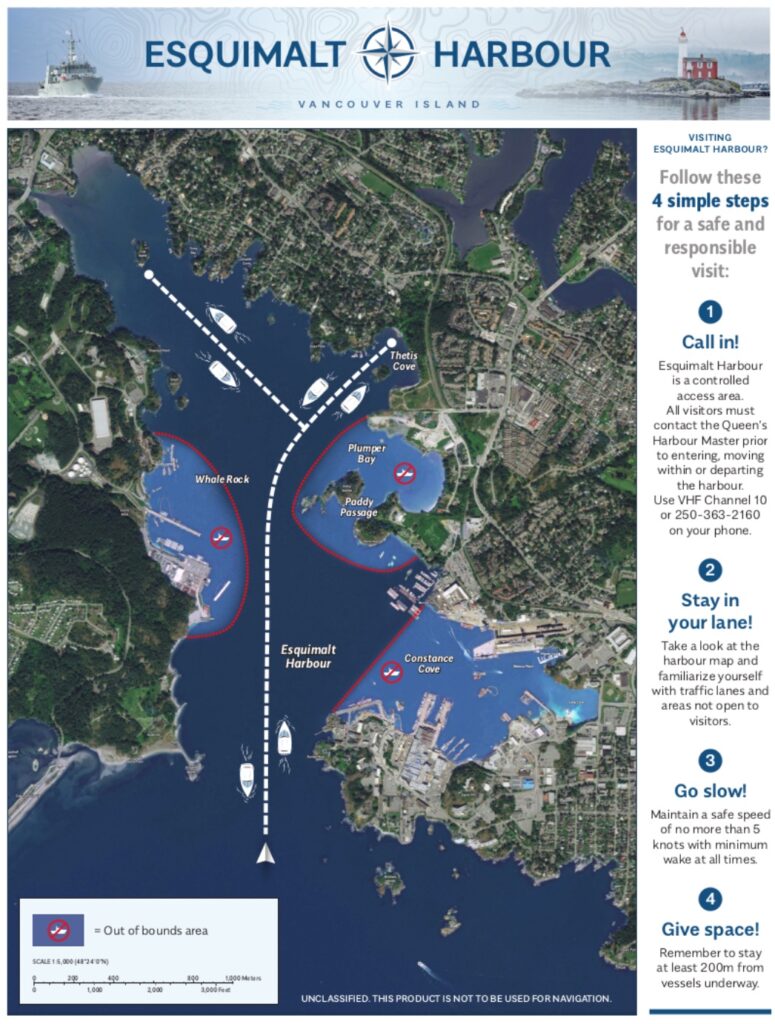The Victoria Waterways Loop - an obvious but often overlooked paddling route
The Victoria Waterways Loop is a kayaking route full of changing landscapes that can take from a few hours up an entire day. There is a lot of interest in improving some of the access points to this route including developing a walkway under the Tillicum Bridge, allowing an easy portage if the tides aren't favourable. For more information on this, see our post The Victoria Waterways Route - History & Progress.
The Victoria Circle Kayak Route can be paddled in either direction and can take about 3 to 4 hours. On the day we went, my friend Bruce Holland and I, chose to go counter-clockwise but in some weather or current conditions it may be better to reverse directions.
We kayaked from the Ocean River Sports Docks in Victoria's Inner Harbour, up the Gorge Waterway to the end of Portage Inlet in View Royal Municipality. At that point, we went over-land through Portage Park, portaging our boats to a beach on Thetis Cove in Esquimalt Harbour.
Once back in our kayaks, we headed out of Esquimalt Harbour past Naden Canadian Forces Base. Paddling past Naden we turned south-east and traveled along the Esquimalt shoreline back to Victoria Harbour. For more details about paddling in Esquimalt Harbour check out our post Esquimalt Lagoon to Cole Island.
Details of this trip Broken Down
The first stretch of water, locally referred to as the Selkirk Waterway, passes through the industrial part of Victoria harbor. Once you pass under the Selkirk Trestle, entering the Gorge Waterway, you begin to really see the beauty of this inland passage, with beautiful homes, parks, bridges and other interesting landmarks. After about 30 minutes of paddling, you will come upon a constriction where the waters narrow down to approximately 10 meters (30’) wide, directly beneath the Gorge-Tillicum Bridge.
Gorge Tillicum Bridge
This passage under the bridge is the Tillicum Narrows and when the tides are right, it becomes a raging tidal rapid. This natural wonder is a tidal overfall that can run as fast as 12 knots, or 22 kph. You must take extreme care and plan your trip through the Narrows when it is slack tide or at least slow enough to allow you safe passage.
Warning: See the trip planning section in this blog post to understand how to get through the Tillicum rapids safely. Depending on the flow of the water, it can be either with you or against you. Without proper preparation and paddling skill level it can be extremely dangerous to paddle through the Narrows. More than a few kayaks and canoes have been capsized here and lives have even been lost.
On our trip we continued paddling right up to the end of Portage Inlet and landed to the left of the municipal service building located here. This section of the trip took us approximately 1 hour and 20 minutes. When the tides are high, you can land here without any problems. However, at low tides, there are large mud flats that extend well out from shore and the boot sucking mud is not negotiable.
If this is the case, you will have to exit early via a public water access site located between 2772 and 2775 Shoreline Dr which is on the opposite side of the peninsula (see map). From the water, it is located in a cove between two private docks, just a short distance past the Admirals Street bridge. There is a boat ramp and path leading to Shoreline Dr. From here you can walk across Shoreline Dr into the school parking lot and onto the path which will take you up to old Island Hwy and the E&N Trail bridge across it.
It is strongly recommended that you exit at the boat ramp and path to avoid the mudflats and to avoid any adverse environmental impact.
The Portage
Once you are out of your boats at the boat ramp, this is the beginning of the portage. At this point, we go from paddling our boats to carrying them. Kayaks really aren’t the easiest thing to carry by yourself, so if you’re going solo, we highly recommend a kayak cart. These clever devices easily disassemble for storage in your kayak but once reassembled easily allow you to pull your kayak along.
If there are two of you, it is possible to do a simple double carry - a person at each end carrying 2 boats. This, of course, will depend on the weight of your kayaks.
Once you're ready to travel, follow the pathway to the Old Island Hwy and follow the sidewalks to the railway/pedestrian bridge. Pass under the bridge and take the ramp up on to the bridge and cross the Old Island Hwy to the pathways of Portage Park.
Time For Lunch?
If you are feeling hungry at this point and your timing is good, an easy 100-meter detour up the hill will take you to the Four Mile Brew Pub & Grill for a lunch.
Portage Park
The paths of Portage Park are either paved or packed gravel so it is easy going with the kayaks. It is a short and pleasant hike down to the beach on Thetis Cove, part of Esquimalt Harbour.
Thetis Cove to Esquimalt Harbour Entrance
As you paddle into Esquimalt Harbour, on your left you will pass Songhees First Nations land and then Naden, the Canadian Forces Naval Base. On your right, you will see the historic Fisgard Lighthouse and Fort Rod Hill.
Important Note: Esquimalt Harbour is now a controlled access area. All visitors must contact the King's Harbour Master prior to entering, moving within or departing the harbour. Use VHF Channel 10 or 250-363-2160 on your phone.
Cole Island
If you care to extend your paddle a little, you can turn right out of Thetis Cove and check out the WWI era munitions storage and loading buildings on Cole Island, which is a National Historic Site. Cole Island is now cared for by the Friends of Cole Island Society under the auspices of the Provincial Heritage Branch. The FoCIS have installed a dock making access to the island much easier and visitors are welcome from sun-up until sun-down.
[caption id="attachment_113463" align="aligncenter" width="1024"]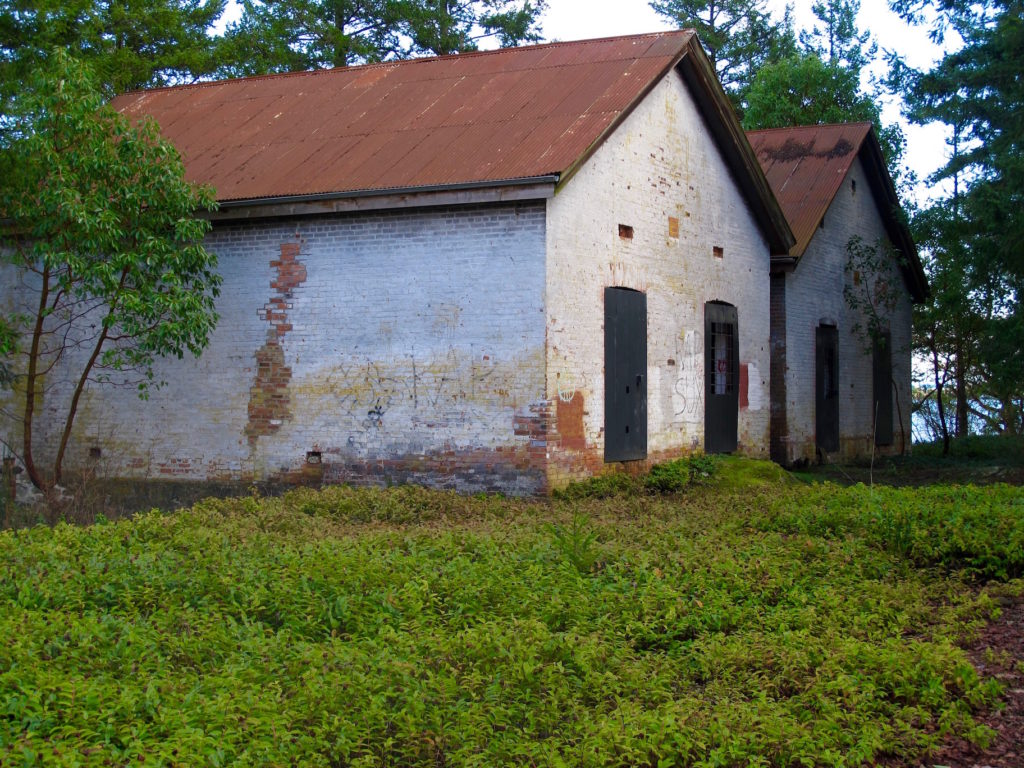 Cole Island - Munitions Storage Buildings
Cole Island - Munitions Storage Buildings
Esquimalt Harbour to Victoria Harbour
Once you are out of the Esquimalt Harbour, it gets more exposed as you head south-east along the Esquimalt shoreline. You will pass beautiful Saxe Point Park and McCauley Point Park along the way. The coastline along here has a much more rugged, west coast feeling.
As you round the point coming out of Esquimalt Harbour, keep in mind that you are now in The Juan De Fuca Straits, so caution must be taken to check your forecasted winds. You should probably not go if the winds are forecast over 10-12 knots. This area can be a rough and inhospitable stretch of water.
Once you hit the open entrance to the Victoria Harbour, paddle in on the west side, staying out of the way of bigger boats and aircraft. Note that Victoria has a very active marine airport so it is necessary for kayakers to say to the left side all the way back into the harbour and back under the Johnson St Bridge. Once you are under the bridge, check for traffic and cross over any time it is safe and you will land back at the Ocean River Sports docks on your right. For more details on paddling in Victoria Harbour check out our post Safety Guidelines for Paddling Around Victoria.
Paddling Times
The paddling time Brian and I took, including the portage was between approximately 4 1/2 hours (not including our lunch break). This is only an estimate and is dependent on how fast you paddle and on how big and social your group is, as well as how much photography or bird watching you may do along the way.
Details of the paddle route
The total distance covered was approximately 16.8 kms or 9 nautical miles, combining roughly 16 kms of paddling with a 750 m (800 yds) portage and took us roughly 4.5 hours.
Wildlife sightings along the route
River Otters, mink, seals, various Gulls, Bald Eagles, Oyster Catchers, Harlequin Ducks, Red Breasted Mergansers, Common Mergansers, Hooded Mergansers, Buffle Heads,Cormorants, Great Blue Heron, Common Golden Eye, American Wigeons, Mallards, Mute Swans, Western Grebes, Horned Grebes, Cormorants, Murres, Pigeon Guillemots, and various shore birds are just some of the wildlife species you can expect to see.
Trip Planning:
Check the weather forecast: Particularly check the winds forecast for the day at the sites posted below. Our recommendation for most paddlers is to keep the winds under 10-12 knots or 18 – 24 kph. Check the times and vary the direction of trip depending on the winds direction and speed. If the winds are from the SE, consider doing the trip counter-clockwise, leaving Victoria Harbour and paddling with the winds to Esquimalt Harbour. Likewise, if winds are light in the morning but forecast higher in the afternoon, do the more exposed Juan De Fuca section in the morning.
Here are some recommended sites for good wind forecasts:
Environment Canada Marine Forecast
Check the currents at the Gorge-Tillicum Bridge - Here are two methods:
1. The easiest and perhaps the best way to do this is with a very convenient Phone app called Aye Tides. Just click ‘Find a Station’ and select Gorge-Tillicum Bridge. If currents are running more than 2 knots extreme caution needs to be exercised.
2. Using the Canadian Tide and Current Tables. Ebb refers to the water flowing out or going from high tide to low tide, this means the water will be flowing in an easterly direction at Tillicum. Flood refers to water flowing from low tide to high tide or westerly at Tillicum.
3. Tideschart also has a very easy to use webpage for checking currents at Gorge-Tillicum.
4. Alternatively, check in with the staff at Ocean River Sports Adventure Center
All in all this a great day paddle! Keep in mind there are many other launching points along the Gorge, Portage Inlet, Esquimalt Lagoon, and Flemming beach that will get you in the loop!
Brian Henry & Bruce Holland
